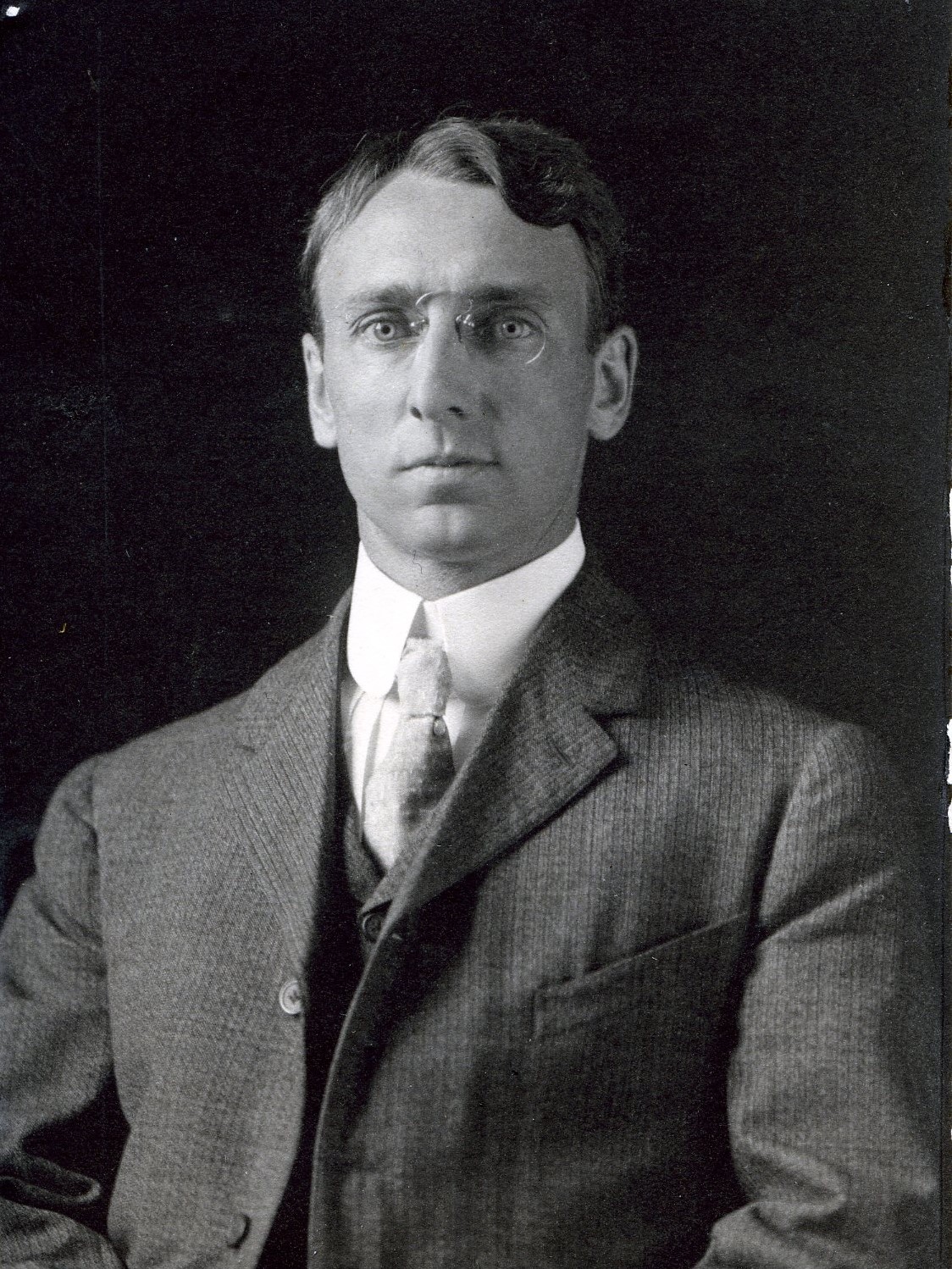Biologist
Centurion, 1908–1943
Born 18 January 1869 in Valparaiso, Indiana
Died 4 January 1943 in Scarsdale, New York
Proposed by William A. Keener and George R. Carpenter
Elected 7 March 1908 at age thirty-nine
Seconder of:
Century Memorial
The life of Gary Nathan Calkins was full and rich. His warm, genial personality won him a host of friends, while his scientific attainments placed him in the foremost ranks of the educators and investigators of his time. Coming under the influence of that extraordinary personality in biology, William T. Sedgwick, he became increasingly immersed in the study of micro-organisms at the most critical time in the historical development of knowledge concerning these creatures and their relations to human interests in manifold ways. Having received his Bachelor’s degree in 1890, he served under Professor Sedgwick as microscopist of the Massachusetts State Board of Health for a few years. Following the advice of Sedgwick, in 1893 Gary Calkins came as a graduate student to the recently established Department of Zoology of Columbia University to pursue his advanced studies under Edmund B. Wilson, a Centurion, who even at that time was taking his place as the leader of investigation in the field of cellular biology. Appointed a junior officer of the department in 1894, he continued to serve as a teacher until his retirement as Emeritus Professor in Residence in 1940 and as an investigator until the last months preceding his death early in January of 1943.
An impressively long series of special studies were the fruits of Gary Calkins’ indefatigable research, and he also published comprehensive volumes on the biology of the Protozoa that are standards in zoological science. In 1907 he was made Professor of Protozoology—the first to be so designated so far as the record is known. Through his own writings and through his instruction to numerous graduate students, he was the virtual founder of a school of protozoology whose influence will continue throughout the years to come.
Gary Calkins’ broad interests led him to serve the cause of science and education in numerous other ways. In 1902 he became a member of the staff of the New York State Cancer Laboratory at Buffalo with a tenure of six years. He was an active participant in the work of many scientific societies, notably the Society of Experimental Biology and Medicine, of which he was President from 1919 to 1921, and the Society for Cancer Research, which he served as President in 1916. For long years he was a member of the Consulting Board of the Institute for Cancer Research of Columbia University. At one period he lectured at the School of Tropical Medicine at Puerto Rico. He was Director of the American University Union at Paris in 1927. And from 1915 to 1931 he served as Trustee and Clerk of the Board of the Marine Biological Laboratory at Woods Hole.
We of the Century will always cherish the memory of Gary Calkins as a companion and friend. From 1908, when he joined the Association, his interest in the finer things of literature and music made him a welcome member of the groups that gathered in former years in the old Graham Library. By virtue of his skill in the games of billiards and pool, he was a worthy antagonist of many of the Century’s expert players, from the earlier days of William Spackman, General Francis Greene, Senator [John C.] Spooner, Charles Herty, Henry Jessup, and Lawrence Abbott down through a long list of contestants of more recent times. And his bright wit enabled him to hold his own in the rapid-fire repartee that seems to be a traditional part of these games as played at the Century.
Geoffrey Parsons
1943 Century Memorials

